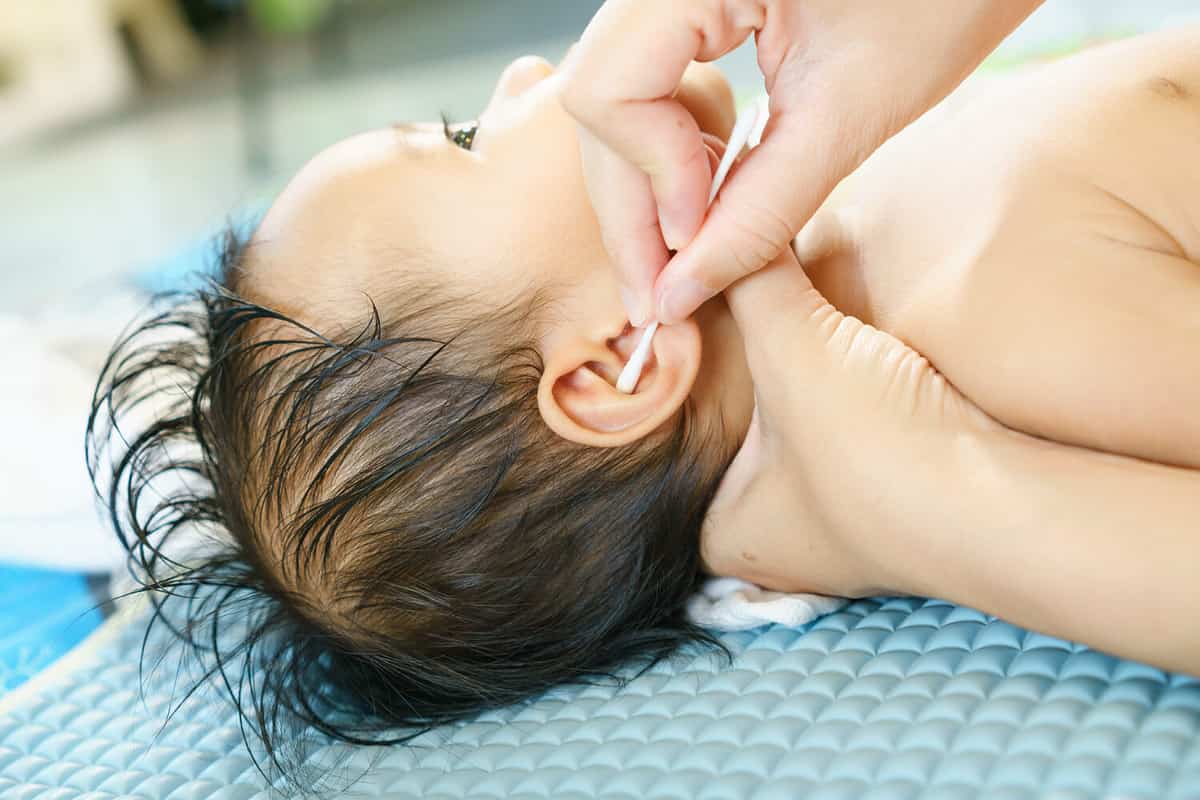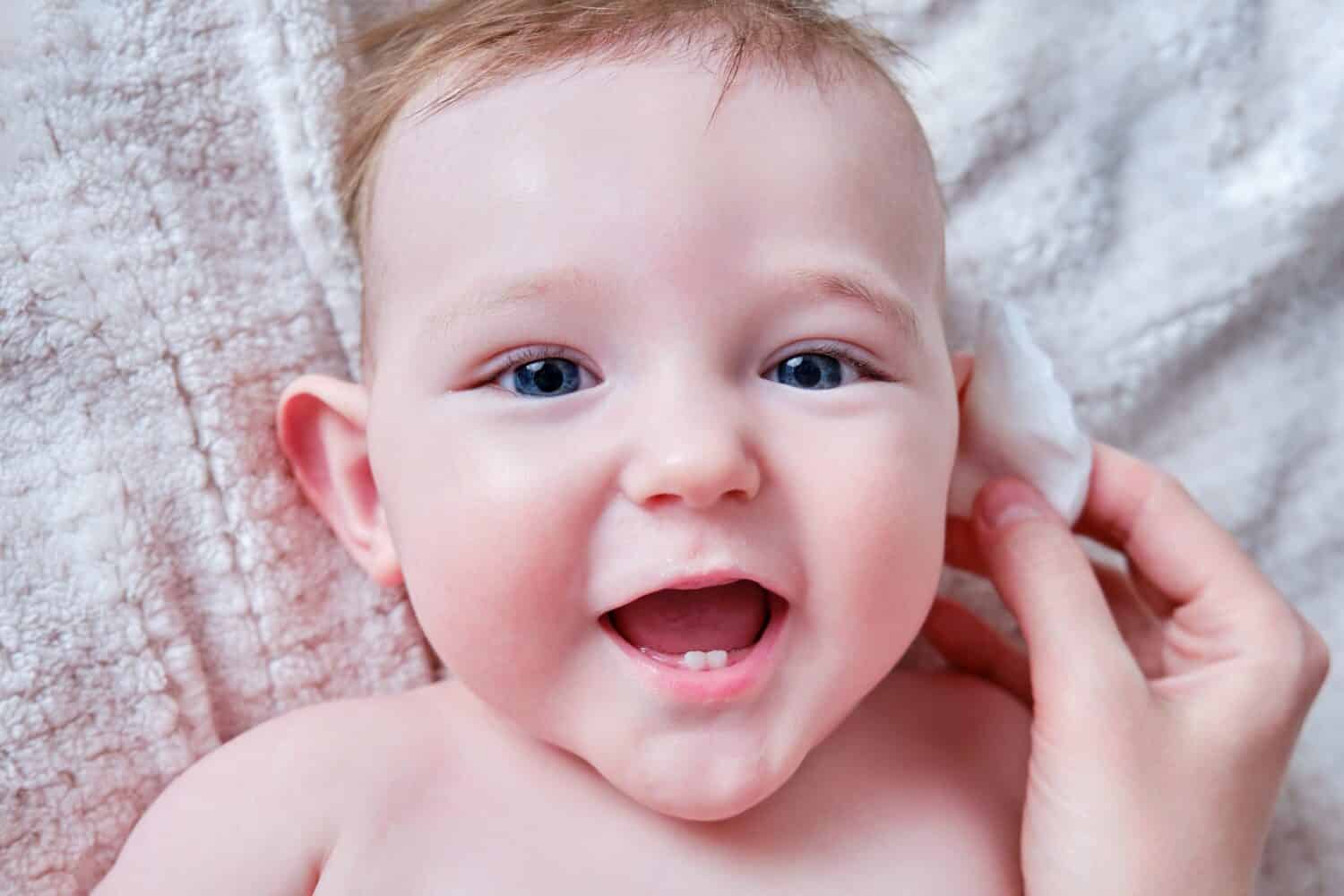Whether we are new parents or seasoned, caring for our baby's ears must be done with great care. All ears, but especially baby ears, are sensitive. However, armed with knowledge and the tools, you can become a pro at cleaning baby ears before you know it!
What is Earwax?
Earwax sometimes gets a bad rap. However, this substance plays a vital role in our overall health. This substance's scientific name is cerumen, which is waxy, oily, and typically yellowish, brown, or orange.
Earwax is essential because it protects our ears from dirt, small particles, and water that may lead to infections. While typically, earwax falls out on its own, it can build up. If this happens to your infant, it is important to go to the pediatrician so they can remove the earwax for you; do not attempt to remove infant earwax buildup on your own. Doing so can make the problem worse.
What is the Purpose of Earwax?
There is not much difference between infant earwax and adult earwax. The one difference is that infant earwax tends to be softer.
Infant earwax serves the same purpose as adult earwax: to protect against infection. It will typically fall out; you do not have to remove it. It is essential not to remove earwax from your baby's ears repeatedly because it serves as a way to protect and keep them healthy.
However, if you notice that your infant has excessive earwax on the outer part of their ears or if their ears are simply dirty, there are a few steps you can take to clean baby ears and a few things to remember!
How Not to Clean Baby Ears
It's important to clean baby ears with great care. Babies cannot tell us when they are in pain except through their cries. Therefore, it is up to us to clean baby ears carefully and remember a few crucial details.
Before we learn how to clean a baby's ears, let's consider what not to do.
One standard method of cleaning ears is to use a Q-tip. While this may seem like a safe and effective way to clean the ears, it's not recommended and can do significant damage. Never stick something foreign inside your baby or child's ears, even a Q-tip. You may accidentally push back the earwax and increase buildup or even damage the ear canal.
Another way to not clean your baby's ears is using your finger or fingernail. Even if you wash your hands, bacteria or germs may be on your fingers or under your fingernails. Additionally, you may accidentally scratch your baby's inner ear.
Do not remove earwax unless it appears to be building up. In this case, take your baby to the doctor so they can help with the removal.

©KITTIPONG SOMKLANG/Shutterstock.com
How to Clean Baby Ears
You need a soft rag or cotton ball and warm water to clean baby ears.
- First, check the water temperature to ensure it is not too hot or cold. Lukewarm water is the best and most comfortable for cleaning baby ears.
- Next, dip a cotton ball or soft washcloth in the water.
- Wring all the water out to avoid accidentally getting some into your baby's ears.
- Gently wipe around, behind, and in the outer part of your baby's ears.
- Do not put the cotton ball or washcloth inside your baby's ear; it can cause damage.
Remember, earwax is important for our child's overall health and should not be removed unless there is an excessive buildup and your doctor states otherwise.
When to Call the Doctor
While earwax is perfectly normal and important for your child's overall health, if you notice these symptoms, especially if you think your child has an earwax impaction, it may be time to call the doctor.
- Baby is pulling or tugging on their ears.
- It appears they can't hear quite as well.
- They seem to be in pain or discomfort.
One Last Note
You can be a pro at cleaning baby ears with time and sensitivity. Remember, baby ears are fragile; never stick anything inside them, especially not a Q-tip or finger. Doing so can push the ear wax deeper inside your baby's ears and cause impaction.
Earwax is an important lubricate that our bodies naturally make to protect us against infections, dirt, and bacteria, and it is also waterproof. Therefore, there is no need to remove earwax unnecessarily.
Instead, clean your baby's ears with a clean and lukewarm washcloth or cotton swab if you notice it is a bit dirty. Protecting your baby's fragile ears, nose, and more can be simple and easy when armed with the facts.
The image featured at the top of this post is ©Zhuravlev Andrey/Shutterstock.com.
